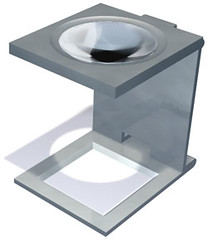I think of this phenomenon every time I'm listening to NPR and the sound guy has designed in all these auditory cues -- cowbells dinging and cattle lowing behind the reporter's voiceover, or what have you.
But sometimes the style persists even after the initial limitations have melted away, and that's interesting.
Example: The first newspapers were printed in black ink on letterpress. Thus they were restricted to the written word and -- initially -- the engraved illustration style. One side effect of these restrictions was that the illustrator could play a real dramatic role in influencing the storytelling (drawing things that never happened, for one extreme).
If you look at a current issue of the New Yorker, you can see a continuation of this style which persists now not because of technological need, but to reach a particular audience which has been prepared by newspapers to prefer its information to be delivered in a particular way. Lots of column inches, set off by illustrations. I mean, they have artists create caricatures to accompany their movie reviews -- who does that? It's not like they have to send Robert Risko to the sound stage to sketch the actors. At this point, the aesthetic is a stylistic choice.
The New Yorker looks the way it does to please the aesthetic of the magazine's creators and audience, and this is all right and proper. But this aesthetic has been more formed by technological constraints than we know.
Television, of course, is the new newspaper, defining an aesthetic for pretty much everybody now.
When I look at the video library on Businessweek.com, I see an information delivery technology which inherits the aesthetic of television, with clickable rows of talking heads instead of a sequence of talking heads, and I have to wonder what the Web would look like if it hadn't been preceded by both the newspapers and television.
I also can't figure out whether what I'm looking at is information-sparse or information-dense. One thing's for sure -- it'd take a whole lot of clicking and watching to find out.

